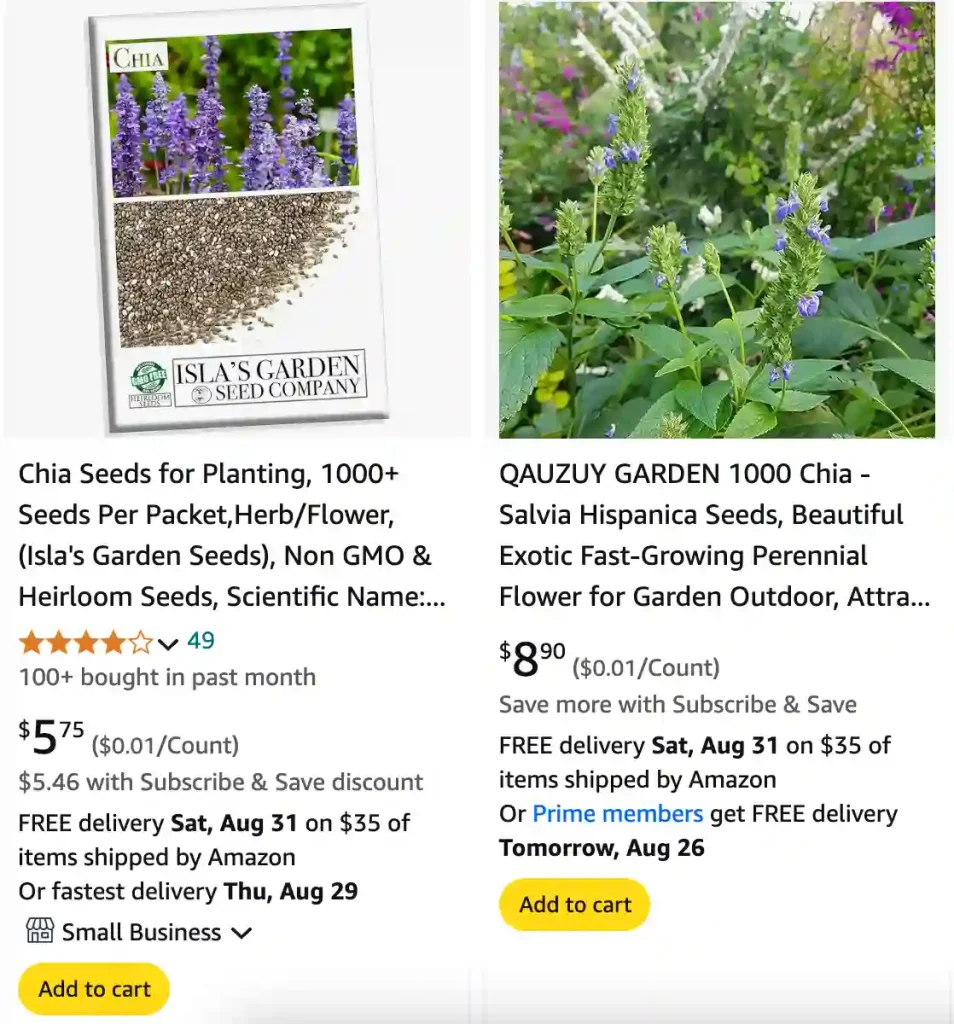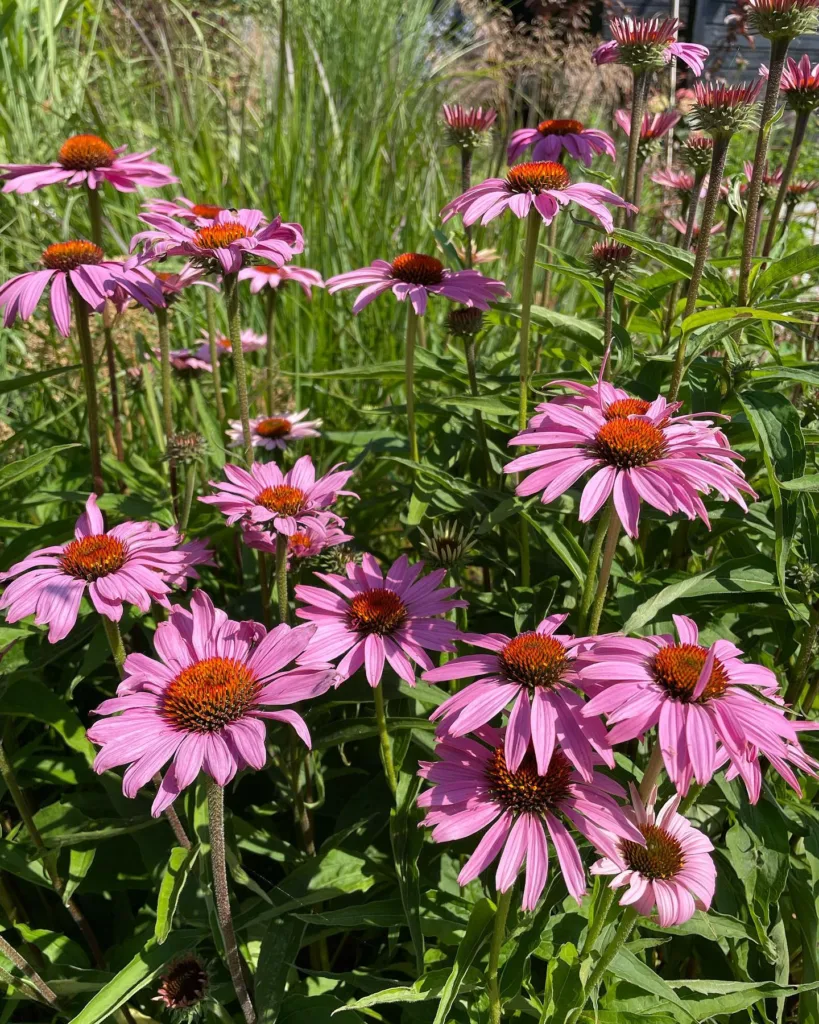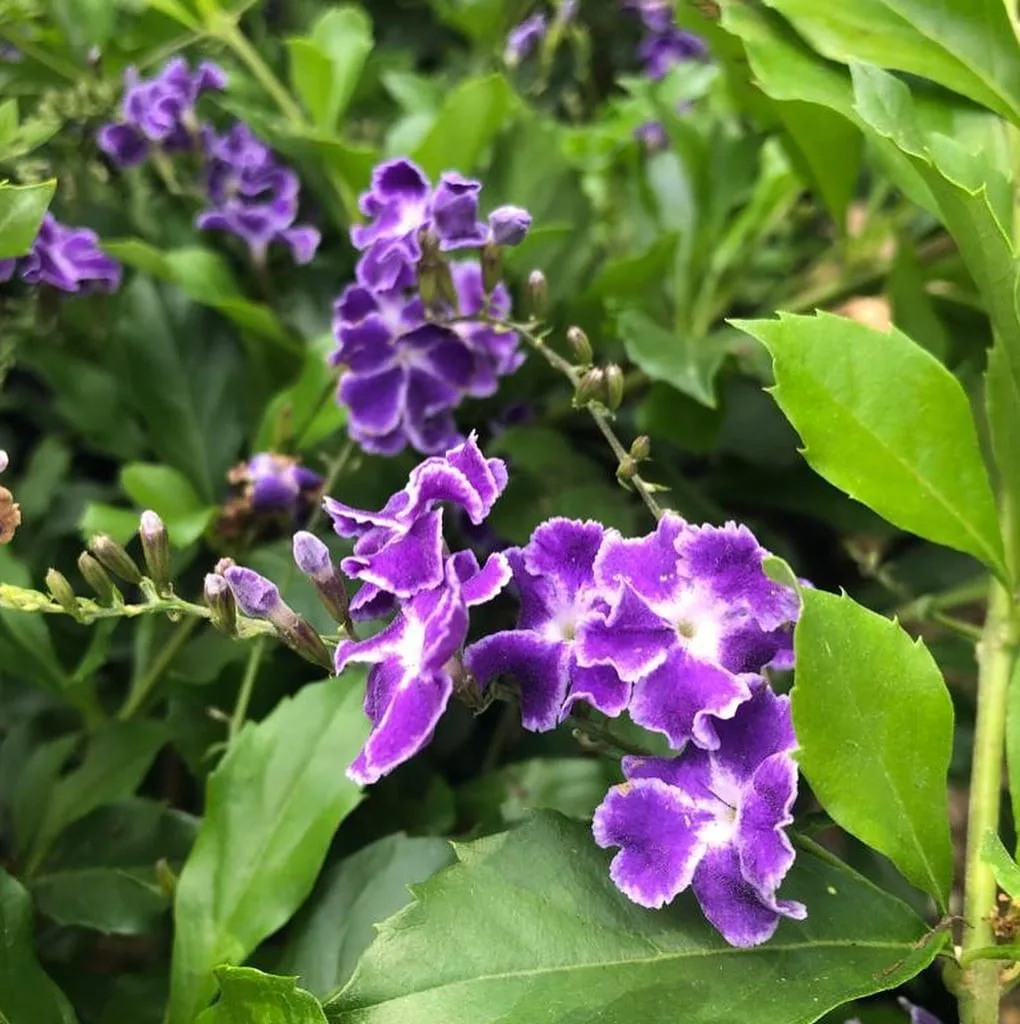
What Is a Chia Plant?
The chia plant, known scientifically as Salvia Hispanica, is an herbaceous plant that originates from the regions of Mexico and Guatemala. It’s famous for its tiny, nutrient-rich seeds that have become a popular superfood in recent years. The plant belongs to the mint family, which is quite evident from its square stems and aromatic leaves.
1050 Species in Genus Salvia
What Does a Chia Plant Look Like?
When growing, a chia plant can reach heights of about 3 to 4 feet. It features slender, green stems and narrow, serrated leaves. The plant produces small, tubular flowers that can be white, purple, or blue. These flowers eventually give way to the tiny chia seeds. The appearance of the chia plant is quite striking and can be a beautiful addition to any garden.
How to Grow Chia Plant from Seeds
Growing chia from seeds is a relatively straightforward process. Here’s how you can do it:
- Sowing: Start by sowing chia seeds in well-drained soil. You can do this either directly in the garden or in seed trays. Plant the seeds about 1/4 inch deep.
- Watering: Keep the soil consistently moist but not waterlogged. Chia plants prefer a moderate amount of water.
- Sunlight: Chia plants thrive in full sunlight, so choose a location that receives at least 6 hours of direct sunlight daily.
- Temperature: They prefer warm temperatures and grow best in zones 9-11. Ensure that the environment is not too cold.
- Spacing: Allow about 12 inches between each plant to give them room to grow.
How to Care for Chia Plants
Caring for chia plants involves several key steps:
- Watering: Regular watering is crucial, especially in the initial stages. Once established, they are relatively drought-tolerant.
- Fertilizing: A general-purpose fertilizer can be applied to boost growth. Follow the manufacturer’s instructions for application rates.
- Pest Control: Keep an eye out for common pests such as aphids or spider mites. Organic insecticides or natural remedies like neem oil can help manage these pests.
- Pruning: Chia plants don’t require much pruning. However, removing any dead or diseased leaves can help keep the plant healthy.
How to Harvest Chia Plant
Harvesting chia is an exciting process. Here’s a simple guide:
- Timing: Harvest when the flower spikes turn brown and dry. This usually happens around 3-4 months after planting.
- Cutting: Cut the flower spikes off the plant using garden shears.
- Processing: Place the spikes in a paper bag or container to fully dry. Once dry, shake the bag to release the seeds.
- Cleaning: Separate the seeds from the chaff. You can use a sieve or winnowing method for this.
Can You Eat the Chia Plant?
Yes, the seeds of the chia plant are edible and highly nutritious. They are rich in omega-3 fatty acids, fiber, and protein. Chia seeds can be eaten raw, added to smoothies, sprinkled on salads, or used to make chia pudding.
Is Chia Plant Edible?
Absolutely. Chia seeds are known for their health benefits. They are often included in health foods and dietary supplements due to their high nutritional value.
What Is Chia Plant Used For?
Chia plants are primarily cultivated for their seeds, which are used in various ways. They are popular in baking, smoothies, and as a thickening agent in recipes. Chia seeds are also known for their potential health benefits, such as improving heart health and aiding digestion.
Is Chia Plant Safe for Cats?
Chia plants are not toxic to cats. However, it’s always best to prevent pets from chewing on plants, as some may have adverse reactions or digestive issues from ingesting non-toxic plants.
How Long Does a Chia Plant Live?
Chia plants are generally annuals, meaning they complete their life cycle within one growing season. They typically live for about 4-6 months, from planting to harvest.
Can a Chia Plant Grow Inside You?
No, a chia plant cannot grow inside you. Chia seeds are not suitable for ingestion in a way that would lead to plant growth inside the human body. They are safe to eat as part of a balanced diet, but they do not pose any risk of growing within the digestive system.
Chia Plant vs Lavender
When comparing chia plants to lavender, several differences emerge. Chia plants are grown primarily for their seeds, which are highly nutritious. Lavender, on the other hand, is known for its fragrant flowers and essential oils. Lavender is used in aromatherapy, cooking, and as an ornamental plant, whereas chia is more focused on its edible seeds.
Lavender plants have a woody stem and a more shrubby appearance, while chia plants are more herbaceous with a distinct flowering spike. Both plants offer unique benefits but serve different purposes in the garden and kitchen.
Benefits of Chia Plants
- Nutritional Value: Chia seeds are packed with essential nutrients, including omega-3 fatty acids, fiber, and antioxidants.
- Versatility: They can be used in a variety of dishes, from smoothies to baked goods.
- Ease of Growth: Chia plants are relatively easy to grow and require minimal maintenance.
Common Problems with Chia Plants
- Pest Issues: Aphids and mites can be problematic. Regular monitoring and natural pest control methods can help.
- Watering: Overwatering can lead to root rot. Ensure good drainage and avoid waterlogging.
Growing chia plants can be a rewarding experience, offering both beauty and nutritional benefits. Whether you’re looking to add a unique plant to your garden or incorporate chia seeds into your diet, understanding the basics of chia plant care and uses will help you make the most of this versatile herb.
If i die, water my plants!



